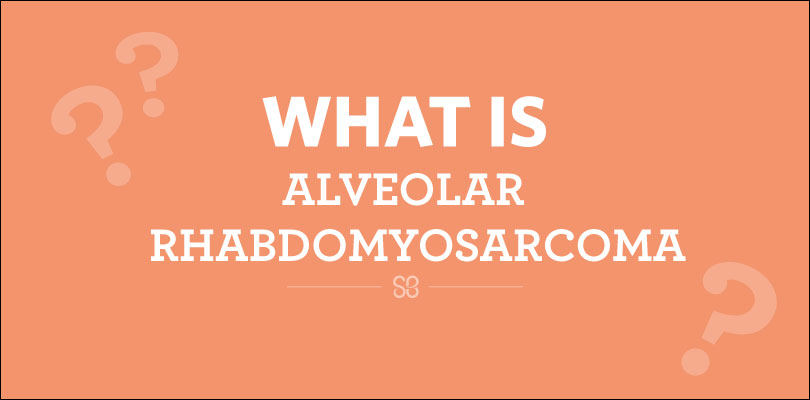
What is alveolar rhabdomyosarcoma?
There are two main types of pediatric rhabdomyosarcoma: embryonal rhabdomyosarcoma and alveolar rhabdomyosarcoma.
- Embryonal rhabdomyosarcoma (ERMS) occurs most often in children under 10 years old and is found in the head, neck, urinary tract, or reproductive organs. It is the most common type.
- Alveolar rhabdomyosarcoma (ARMS) is more aggressive, occurs more commonly in teens or young adults, and usually starts in the torso, arms, or legs.
Rhabdomyosarcoma is the most common soft tissue cancer in children, with approximately 350 new cases each year in the United States.
What are the signs and symptoms of alveolar rhabdomyosarcoma?
Rhabdomyosarcoma can happen in many different places in the body, so the signs and symptoms of it depend on where it is located.
With alveolar rhabdomyosarcoma, a person may first notice a lump or swelling on their torso, arm, or leg that keeps getting bigger and does not go away. Sometimes the lump or swelling is painful.
Other signs can include trouble urinating or difficulty with bowel movements, or there may be blood in the urine.
We need your help to find the best treatments for kids with cancer. Donate now to help them grow up and live long, healthy lives >
What treatment options are available for alveolar rhabdomyosarcoma?
Treatment for a child, teen, or young adult with alveolar rhabdomyosarcoma is based on the size and stage of the tumor, where the tumor is located on the body, and whether or not the tumor has spread to other parts of the body. The combination of these factors helps doctors decide whether the cancer is low risk, intermediate risk, or high risk.
Treatment options for alveolar rhabdomyosarcoma include:
- Surgery: Depending on the location of the rhabdomyosarcoma, a surgeon may try to completely remove the tumor. In most cases of rhabdomyosarcoma, this is not possible. Chemotherapy, and sometimes radiation therapy, may be given before surgery to shrink large tumors.
- Chemotherapy: All children with rhabdomyosarcoma receive chemotherapy as part of their treatment regimen. The type of chemotherapy agent, dose, and the number of treatments given depends on whether the child has low-, intermediate-, or high-risk rhabdomyosarcoma.
- Radiation therapy: In addition to chemotherapy and surgery, some kids with rhabdomyosarcoma benefit from radiotherapy.
What is the current state of rhabdomyosarcoma research?
Research that looks at the causes and treatment of rhabdomyosarcoma has greatly improved the care of rhabdomyosarcoma patients over the last few decades. Unfortunately kids with aveoloar rhabdomyosarcoma continue to have poorer outcomes because of its aggressive and metastatic nature. There are many challenges to face — challenges like:
- Improving the outcome of patients, especially those with high-risk disease or disease that recurs.
- Developing new targeted therapies to improve cure rates and reduce side effects.
- Identifying new biomarkers to more accurately diagnose rhabdomyosarcoma and determine the level of risk.
Donate now and help support research into better treatments for kids with cancer.
Read stories about kids with alveolar rhabdomyosarcoma:

 SBF
Tweets »
SBF
Tweets »